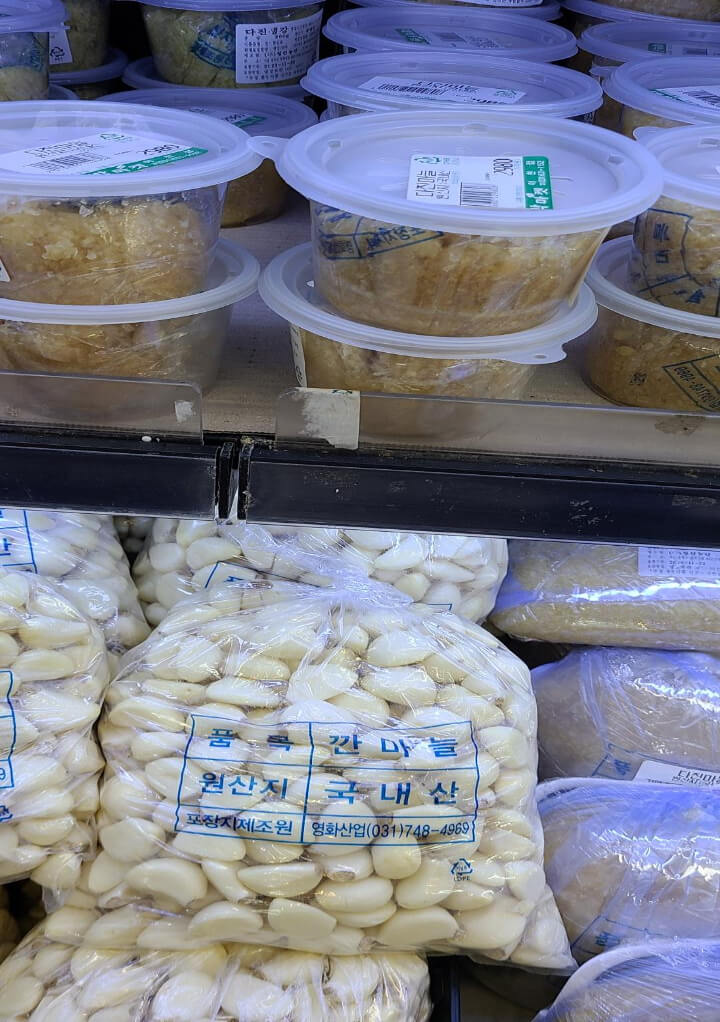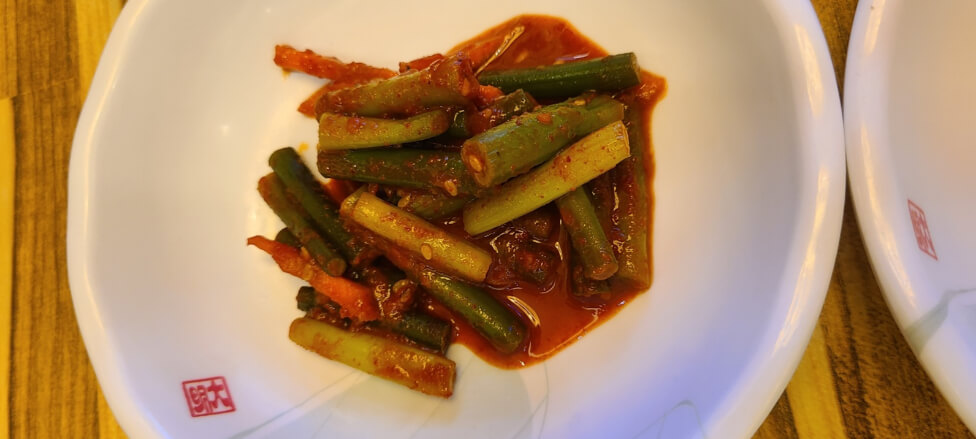Koreans’ garlic consumption is definitively the highest in the world. From a K-barbecue mukbang to an important seasoning when cooking, it is an essential part of Korean cuisine. Today, starting with the origin myth of Korea where garlic plays an important role, we will learn all about garlic: its benefits, its uses, how to cook with it, etc.
Pork belly and a piece of garlic
The following video is from a mukbang of celebrities eating barbecue pork belly. I suggest that you avoid watching it when hungry. It could drive you crazy.
Pork belly and a piece of garlic, wrapped up in lettuce. Some people eat the garlic raw, while others eat it roasted. Either way, whether it’s in a stew, a soup, or a lettuce wrap, garlic is a part of the daily lives of people in Korea.
Garlic in origin myth
Garlic also appears in the origin myth of Gojoseon, the first Korean nation. Gojoseon, which is said to have been founded by King Dangun during the Bronze Age in 2333 BC, can be considered the first Korean nation. To briefly summarize this origin myth, in ancient times, Hwanung, the son of the god Hwanin, desired to descend to Earth, so his father allowed him to do so and rule over the inhabitants of the world. With his companions Pungbaek, the deity of wind, Usa, the deity of rain, and Unsa, the deity of clouds, Hwanung descended to Taebaek Mountain to rule and teach the human world, controlling as many as 360 aspects, including grain, life, disease, punishment, and good and evil. Then, a bear and a tiger came to Hwanung and begged him to let them become human. Hwanung told the bear and tiger that they could become human if they spent 100 days in darkness eating only garlic and mugwort, without once seeing sunlight. The tiger could not endure this trial and ran away, but the bear triumphed and became a human. A bear became a woman named Ungnyeo, who married Hwanung and gave birth to King Dangun. The very King Dangun who founded Gojoseon. If you think about it, all Koreans are the sons and daughters of a bear. 🙂 Although it is a legend and not reality, it is the oldest and most widely known origin myth of Korea. All Koreans learn about it starting in elementary school.
Garlic, Korean people’s soul food
It would not be an exaggeration to say that garlic is Korean people’s soul food. It is a very common ingredient used in numerous dishes. We’ll go over this more later, but to make Korean food (I won’t get into any complicated dishes), you’ll need garlic, green onion, onion, soy sauce, soybean paste, red pepper powder, flavored salt, sesame oil, dashi stock, and miwon seasoning. These 9 seasonings are the heroes we need. Korean soy sauce, soybean paste, red pepper powder, flavored salt, sesame oil, dashi stock, and miwon seasoning are sold at Korean grocery stores, right? I think they’re even sold on Amazon.
Benefits of garlic
In 2002, garlic was selected by Time magazine as one of the world’s top 10 healthiest foods. Garlic is also at the top of the food pyramid for maintaining good health created by the National Cancer Institute (NCI) in the US. Garlic minimizes unpleasant odors and tastes from meat and fish, and increases appetite. Garlic contains a variety of nutrients such as vitamins B1, B2, and C, glutamic acid, calcium, iron, and phosphorus, increases energy and prevents fatigue, and has antioxidant properties. It also has sterilizing and antibacterial properties, eliminating harmful bacteria such as Helicobacter pylori from food to prevent food poisoning and other digestive issues. Garlic is at the top of the list of 40 currently known anti-carcinogenic foods.
Oh, but don’t eat too much. Especially on an empty stomach. You’ll get a stomach ache. If you’ve eaten a delicious garlic-filled meal, but now it’s causing you some tummy trouble, try slowly drinking a glass of milk. Herbal tea or jasmine tea are also good. Ah! Have you ever peeled garlic with your bare hands and then can’t get the small of garlic off your fingers? It could be useful for hunting vampires, but all you really have to do is wash your fingers with a few drops of vinegar.
Garlic in Korea
Anyway, garlic is one of the most important seasonings for Korean stews and seasoned side dishes, and a lack of garlic in these foods will make them taste bland and unfulfilling.
Most Korean households keep ground garlic in the refrigerator and use it every time they cook. You can even easily buy garlic pre-ground at the supermarket. It can be annoying to peel and grind it everytime, so I like to get it pre-prepared.
[The following are pictures of garlic sold at Korean supermarkets.]

Even your favorite Korean ramen soup definitely! obviously! contains garlic. It’s also in bulgogi. Almost all Korean foods you have tried contain garlic.
Garlic jjong
Koreans eat so much garlic that they must be at the top of vampires’ ‘do-not-bite’ list. What’s interesting is that Koreans don’t just eat garlic bulbs. We also eat something called garlic jjong in Korean. It’s the upper green stem in the photo below, sometimes called garlic scapes in English. Koreans cook and eat garlic scapes as shown below. It has a nice texture and is a popular side dish. You can stir-fry it with ham or other meat. It’s not a difficult dish to make, so everyone can try it out.

| Sprinkle the garlic scapes with vinegar, wash them clean and cut them into bite-sized pieces (prepare an amount about the size of two fists) → Put half a spoonful of salt in boiling water and blanch for 20 seconds (this will improve the flavor and help them absorb seasoning) → Rinse the blanched garlic scapes once in cold water. → Put 1 spoon of cooking oil, 1 spoon of sesame oil, 4 spoons of soy sauce, 3 spoons of water, half a spoon of ground garlic, and 1 spoon of sugar in a pan and boil. (seasoning can be adjusted to taste)→ Once it boils, add the garlic scapes and stir-fry → Once it has boiled down, turn off the heat, add a spoonful of oligosaccharide and mix → Voila! |